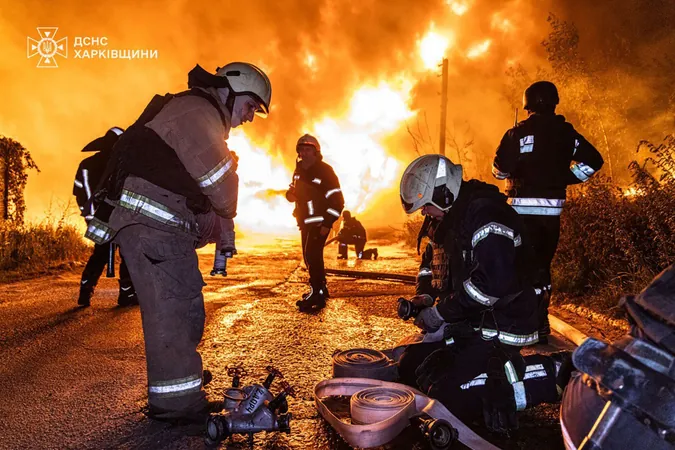
Endless Drones and Missiles: How Russia Keeps Its Assault on Ukraine Going Strong
2025-07-13
Author: Ting
In a terrifying escalation of conflict, Russia's military has unleashed a barrage of thousands of missiles and drones on Ukraine in the past month, forcing countless civilians to seek refuge underground every night. The recent surge in attacks marks the most intense wave of assaults since the full-scale invasion began in February 2022.
Despite multiple sanctions aimed at crippling its military capabilities, questions remain: where does Russia find its seemingly limitless supply of drones?
Military tech expert Fabian Hoffmann from the University of Oslo shed light on this mysterious supply, noting that Russia has ramped up the use of long-range drones, which are surprisingly simple to manufacture. "These drones are mostly made of lightweight materials and have explosive warheads. The hardest part of production is acquiring conventional explosives, but components like navigation systems can often be produced or procured easily," he explained.
While the quality of these drones may not match the high military standards found in the West, they are adequate for Russia’s needs.
Initially, Russia secured several Shahed drone variants from Iran, recognizing their effectiveness. This led to a partnership where Iranian engineers helped set up production facilities in Russia, allowing Russia to manufacture these drones domestically.
Over time, Russia has developed its own version called the Geran-2, incorporating several modifications, including aesthetic changes like painting them black for better concealment during nocturnal operations.
The drones, although slower and less powerful than traditional missiles, are primarily designed to overwhelm Ukraine's defense systems through sheer volume. This tactic forces Ukraine to deploy costly interceptor missiles to fend off the Shahed drones, quickly depleting their defense stock.
President Zelenskyy recently reported that numerous enemy targets were shot down using interceptor drones, but acknowledged that Ukraine is working to enhance its defensive capabilities.
Amid renewed Russian aerial attacks, former President Donald Trump assured the provision of more defensive weapons to Ukraine, coinciding with a pause in Pentagon shipments due to dwindling U.S. stockpiles.
Hoffmann suggests that rather than merely relying on missile defenses, Ukraine might consider targeting drone launch sites and Russian defense industrial complexes, especially those involved in producing drone components like electronics and explosives.
The challenge lies in the balance of power; while Europe enhances missile defense capabilities, Russia continues to advance its offensive operations at a faster rate. These offensive weapons are cheaper to produce as well.
In a bid to outpace adversaries in unmanned warfare, Defense Secretary Pete Hegseth recently expedited drone production and testing protocols.
Another crucial front for the West is to impose sanctions on third-party nations that facilitate Russia's acquisition of banned components. Countries like Malaysia and Kyrgyzstan have emerged as key players in circumventing international restrictions, complicating the sanctions landscape.
Hoffmann warns that while sanctions are essential, they also pose risks to the countries imposing them, potentially disrupting global trade and raising costs.
However, Zelenskyy maintains that the international community can do more to hinder Russia’s weapon purchases, asserting that recent attacks highlight the urgent need for harsher sanctions on oil, which has been financing Moscow's war efforts for years.




 Brasil (PT)
Brasil (PT)
 Canada (EN)
Canada (EN)
 Chile (ES)
Chile (ES)
 Česko (CS)
Česko (CS)
 대한민국 (KO)
대한민국 (KO)
 España (ES)
España (ES)
 France (FR)
France (FR)
 Hong Kong (EN)
Hong Kong (EN)
 Italia (IT)
Italia (IT)
 日本 (JA)
日本 (JA)
 Magyarország (HU)
Magyarország (HU)
 Norge (NO)
Norge (NO)
 Polska (PL)
Polska (PL)
 Schweiz (DE)
Schweiz (DE)
 Singapore (EN)
Singapore (EN)
 Sverige (SV)
Sverige (SV)
 Suomi (FI)
Suomi (FI)
 Türkiye (TR)
Türkiye (TR)
 الإمارات العربية المتحدة (AR)
الإمارات العربية المتحدة (AR)